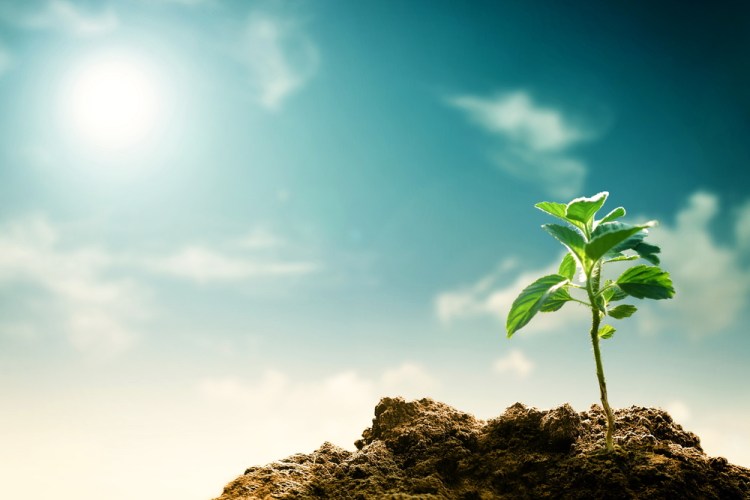It’s beginning to feel like I am as much an environmental writer as a gardening columnist. Almost half of my columns in the past year involved climate change to some extent or actions people could take to make the world a better place.
When I became The Maine Gardener in 2004, the columns appeared in the paper’s Home & Garden pages.
That placement implied that gardening was at least in part a home-improvement project, something done to improve a property’s curb appeal. I wrote a lot about which trees and shrubs grow best, where they should be placed in relationship to the house, the right way to plant them so they would thrive and how they should be pruned.
Vegetable gardens were also big – and still are, in my mind. I’d write about which variety of strawberries were tastiest and which were most prolific, for example, and do the same with other fruits and vegetables in the garden.
And I wrote a little about how gardening is just plain fun.
But the columns were mostly how-to. My concerns ended at my property line, and I thought that the readers’ interest ended at their property line, as well.
My wife (and fellow gardener) Nancy and I avoided chemical pesticides, but we did so mostly because we had young children at the time, as well as outdoor cats. We didn’t want them ingesting poisons.
But as the years went by and I wrote the column week in and week out, my horizons expanded.
The Friends of Casco Bay raised concerns about pesticides and fertilizer washing out of the soil, entering the bay, contributing to algae blooms and sickening fish. In the interior of the state, lake associations raised similar concerns.
Growing native plant species was a trend, but it was mostly a way to reduce garden maintenance. The idea was that if a plant grew naturally in your neighborhood, it would need less fertilizer, fewer pesticides and generally less care in your garden.
It wasn’t until after Douglas Tallamy’s “Bringing Nature Home” was published in 2007 that the average gardener began to understand the connections and complicated relationships between native plants, native insects and the birds we want to thrive.
Around the same time, world events began intruding on the home garden. Colony collapse disorder of honeybees started in 2006, and while the population of monarch butterflies began declining in the 1990s, the decline didn’t become big news until about the same time the bees started dying off.
Concern about freon and similar gases damaging the atmosphere started in the 1970s, but climate change wasn’t huge news until the start of the 21st century, as I recall.
By April 2014, when the Source section was launched, my gardening had evolved to the point where I realized what I did on my property affected not only the surrounding land and waters, but the world as a whole. And when my column found a new home in a section devoted to sustainability, the column reflected that change.
The broader scope will continue, even without Source.
When I find more people like Jesse Bellemare, the Smith College professor who spoke at Coastal Maine Botanical Gardens about how climate change is moving the places suitable for plants faster than the plants can chase that change, I will write about them.
If in writing what should have been a simple column about whether truffles will grow in Maine, as I did last week, I find climate change is expected to eliminate truffles from their native range in Europe, I’ll write about that, too.
I am more addicted to news about climate change than I am to political news. Both are scary, but climate change is scarier.
A couple of examples:
Brooke Jarvis wrote in the New York Times about the insect apocalypse. The story starts out with the observation that when people go for a summer drive, the windshield doesn’t get covered with dead bugs the way it used to – something I had noticed, but thought it was because I am now living in southern Maine.
“What we’re losing is not just the diversity part of biodiversity, but the bio part: life in sheer quantity,” she wrote.
She also says that some species are becoming functionally extinct. “Functionally extinct animals and plants are still present but no longer prevalent enough to affect how an ecosystem works. Some phrase this as the extinction not of a species but of all its former interactions with its environment – an extinction of seed dispersal and predation and pollination and all the other ecological functions an animal once had, which can be devastating even if some individuals still persist.”
The Associated Press reported on an article from the journal “Science” that 250 million years ago 90 percent of sea life and 70 percent of land life died. The death was caused by volcanoes, which warmed the water so much that it no longer had enough oxygen to sustain life. Curtis Deutsch, an earth scientist at the University of Washington, said the ancient die-off “shows almost exactly what lies at the end of the road we’re on. We’re really doing the same thing to Earth’s climate and oceans.”
Todd May, a professor of philosophy at Clemson University, had an interesting reaction to that “Science” article.
“It may well be, then, that the extinction of humanity would make the world better off and yet would be a tragedy.”
On that bright note: Happy New Year.
TOM ATWELL is a freelance writer gardening in Cape Elizabeth. He can be contacted at: tomatwell@me.com
Send questions/comments to the editors.


